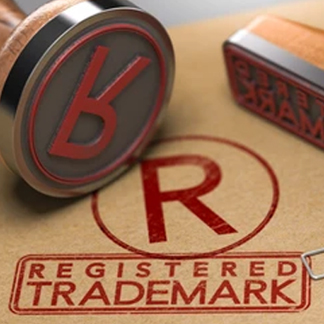Considerations for obtaining a foreign trademark registration

Legal & Compliance
186 week ago — 6 min read
Many US brand owners do not understand that their valuable trademark rights end at the US border. To be protected outside of the US, foreign trademark registration rights must be acquired separately across territories.
In the US, trademark rights are given through the use of a mark and developed through receiving a federal registration with the United States Patent and Trademark Office (USPTO).
Moreover, eligibility for trademark registration as well as the standard for trademark infringement varies in each country. Therefore, businesses that have the potential for growth outside the US need to actively plan and get trademark protection in foreign territories concerned with their specific applications.
Suggestions for Registering a Trademark Overseas
Register the Trademark in the US First
Before exploring international trademark protection, first, you should file or register your trademark in the US
The trademark application can be made directly on the USPTO website. Additionally, registering in the US first will provide you with more strong grounds to register in other countries.
Do your due diligence
To protect your brand in other countries, it is necessary to know how the system in that particular country works in the US.
Take time to familiarise yourself with the trademark rules and regulations of other countries where you are trying for registration. Further, some great research assistance includes the International Trade Administration as well as the WIPO.
Also read: Common trademark mistakes to avoid
Apply under the Madrid System
The Madrid System is a one-stop clarification for registering and managing trademarks worldwide. Additionally, under the Madrid Agreement, trademark applicants can offer one application to protect their work within a combination of countries. Likewise, the Madrid Union is made up of countries that accept these international trademarks.
You can apply for international trademark support or assurance by registering an MM2 form, which is free on the WIPO website. Next, you can submit a hard copy to the US office.
113 countries currently are part of the Madrid Agreement, including France, Australia, Italy, China, and the European Union.
You can choose specific countries, or you can decide to protect your trademark in all 113 nations. Similarly, there is a processing payment for filing a trademark with the WIPO, but it is less expensive than registering individual forms within each country.
Also read: What is the difference between Trademark ™ and Registered trademark symbol ® ?
Select an Attorney
There are various countries not protected under the Madrid Agreement, such as Saudi Arabia, Canada, and South Africa.
Further, if you are engaged in registering a trademark not covered under the Madrid Agreement, consider seeking guidance from an attorney in the country you are looking to register.
Consider Foreign Translations
It is advisable to thoroughly examine the foreign translations of words you might be seeking to trademark in other languages. Make sure to consider the foreign translation of whatever term or slogan you are trying to use in that particular country.
Don’t delay
It is best not to delay registering trademark applications abroad, especially if you intend to do business abroad in the short term.
Takeaways and pitfalls to avoid
- Consider global issues and account for potential growth when choosing a trademark. Among other things, trademark owners should examine:
- What their most important potential markets are, even if there is no current plan to sell abroad.
- Whether the goods will be traded online and if they will be shipped abroad.
- Additionally, in what countries are the products and goods most likely to be knocked off
- And, where the goods are being made.
2. Once a mark is preferred, conduct a US trademark clearance search to make sure that 1) the trademark is eligible for registration, and 2) that the proposed trademark does not clash with any third-party trademark claims.
3. Conduct foreign trademark searches to make sure that you will not be blocked from extending into or exchanging in foreign countries of interest.
4. Do not delay in registering a US application, as there are many benefits in getting a Federal Trademark Registration and filing early. Moreover, filing an intent-to-use based application will give you a valuable first-use date and secure filing based on the priority in the US.
5. File in foreign territories within six months of registering in the US to claim priority back to the US application filing date.
6. Additionally, file the correct type of application in foreign territories depending upon the conditions.
7. Likewise, work with an expert trademark attorney that explains the global trademark landscape. It runs with a network of good trademark attorneys in foreign countries.
Also read: Trademark your brand to safeguard your brand
To explore business opportunities, link with me by clicking on the 'Connect' button on our eBiz Card.
Image source: shutterstock.com
Disclaimer: The views and opinions expressed in this article are those of the author and do not necessarily reflect the views, official policy or position of GlobalLinker.
Posted by
Vakilsearch StaffGreetings! We would love to work with you and your company. We look forward to connecting with business houses and MSME's.
View Vakilsearch 's profile
Other articles written by Vakilsearch Staff
Know About the 4 Types of Partnership Firms
25 week ago
Most read this week
Trending
Ecommerce 5 days ago















Comments
Please login or Register to join the discussion